#devops and collaboration
Explore tagged Tumblr posts
Text






Boost your remote DevOps team's efficiency with these strategies.
2 notes
·
View notes
Text
What Is a DevOps Team? Roles, Responsibilities, and How They Drive Success- OpsNexa!
Learn about the key roles within a DevOps team, how they work together to automate processes, and the benefits of DevOps in improving software delivery. What Is a DevOps Team? Discover the responsibilities of each role, including DevOps engineers, developers, and quality assurance engineers.
#DevOps Team Structure#DevOps Roles and Responsibilities#DevOps Collaboration#DevOps Team Model#DevOps Culture
0 notes
Text
How Docs-as-Code Transformed Pinterest's Documentation Excellence
Pinterest, a platform known for inspiring creativity, faced challenges in maintaining high-quality technical documentation before adopting innovative strategies. The introduction of Docs-as-Code transformed Pinterest’s documentation, revolutionizing how their teams create, manage, and share technical content. This approach, which treats documentation like software code, brought a new level of efficiency and collaboration to their internal processes. By aligning documentation workflows with software development practices, Pinterest achieved remarkable improvements in clarity, accessibility, and scalability. This article explores how this transformation unfolded and why it matters for businesses aiming to streamline their documentation efforts.
What Is Docs-as-Code?
Understanding the Concept
Docs-as-Code is a philosophy that integrates documentation processes with the tools and workflows used in software development. Instead of relying on traditional word processors or siloed platforms, teams write documentation in lightweight markup languages like Markdown, store it in version control systems, and manage it through collaborative code review processes. This method ensures that documentation evolves alongside the codebase, staying relevant and accurate.
Why It’s a Game-Changer
The Docs-as-Code approach eliminates the disconnect between developers and documentation teams. By using familiar tools like Git for version control, teams can track changes, collaborate seamlessly, and automate updates. This alignment fosters a culture of shared responsibility, where developers and writers work together to maintain high-quality content. For Pinterest, this meant faster updates, fewer errors, and a more cohesive documentation strategy.
Pinterest’s Journey to Docs-as-Code
The Challenges Before Adoption
Before implementing Docs-as-Code, Pinterest struggled with outdated documentation tools that couldn’t keep pace with their rapid growth. Traditional platforms were clunky, lacked integration with development workflows, and often resulted in fragmented or inconsistent content. Teams spent excessive time manually updating documents, which led to delays and reduced productivity. The need for a scalable, efficient solution was clear.
The Shift to PDocs
Pinterest developed PDocs, an internal documentation system built on the Docs-as-Code philosophy. This system leveraged Markdown, a format that’s both human-readable and compatible with modern language models, eliminating the need for complex translations between formats. By storing documentation in source control alongside code, Pinterest ensured that updates were tracked and reviewed systematically. This shift streamlined their processes and set the stage for transformative improvements.
Key Benefits of Docs-as-Code for Pinterest
Enhanced Collaboration Across Teams
One of the most significant advantages of Docs-as-Code was improved collaboration. Developers, engineers, and writers could work within the same environment, using tools they already knew. Code review processes, typically reserved for software, were applied to documentation, ensuring accuracy and consistency. This collaborative approach reduced silos and empowered teams to contribute to documentation effortlessly.
Streamlined Updates and Maintenance
With Docs-as-Code, Pinterest integrated documentation updates into their continuous integration and continuous deployment (CI/CD) pipelines. This automation meant that changes to code could trigger corresponding updates to documentation, keeping content current. The use of version control also allowed teams to track changes over time, making it easy to revert to previous versions if needed.
Improved Accessibility with AI Integration
Pinterest took Docs-as-Code further by integrating it with generative AI tools. PDocs included a chat feature that allowed users to ask questions directly within the documentation interface, powered by AI. Additionally, integrations with internal communication apps enabled an AI bot to share relevant documentation snippets when needed. These features made information more accessible, reducing the time employees spent searching for answers.
How Docs-as-Code Boosted Documentation Quality
Consistency and Clarity
Using Markdown as the primary format ensured that Pinterest’s documentation was consistent and easy to read. Unlike traditional platforms that often produce cluttered outputs, Markdown’s simplicity allowed for clean, structured content. This clarity was especially valuable for technical teams who needed precise, unambiguous instructions.
Scalability for Growing Needs
As Pinterest grew, so did its documentation demands. Docs-as-Code provided a scalable framework that could handle increasing volumes of content without compromising quality. The ability to manage documentation like code meant that Pinterest could onboard new teams and projects without overhauling their systems, saving time and resources.
Error Reduction Through Automation
Manual documentation processes are prone to human error, but Docs-as-Code minimized these risks. By automating validation and deployment through CI/CD pipelines, Pinterest reduced inconsistencies and ensured that published documentation was accurate. This reliability built trust among users, both internally and externally.
SEO-Friendly Practices in Pinterest’s Documentation
Optimizing for Discoverability
While Pinterest’s documentation is primarily internal, the principles of Docs-as-Code align with SEO-friendly practices. By structuring content with clear headings, subheadings, and concise language, Pinterest made its documentation easy to navigate. This structure mirrors best practices for web content, ensuring that information is discoverable and user-friendly.
Engaging Internal Audiences
Docs-as-Code transformed Pinterest’s documentation into a resource that employees could engage with effectively. The integration of AI-driven search and chat features meant that users could quickly find relevant content, much like how external websites optimize for user intent. This focus on usability enhanced the overall experience for Pinterest’s teams.
Lessons for Other Organizations
Adopting a Collaborative Culture
Pinterest’s success with Docs-as-Code highlights the importance of fostering a collaborative culture. Organizations looking to implement this approach should encourage cross-functional teamwork, ensuring that developers and writers share ownership of documentation. Training teams on tools like Git and Markdown can bridge gaps and align efforts.
Leveraging Existing Tools
One of Pinterest’s smartest moves was using tools already familiar to their developers. Organizations don’t need to reinvent the wheel—leveraging existing version control systems and CI/CD pipelines can make the transition to Docs-as-Code seamless. This approach reduces the learning curve and accelerates adoption.
Prioritizing Scalability
For growing companies, scalability is critical. Docs-as-Code offers a framework that can expand with organizational needs. By investing in automation and integrations early, businesses can avoid the pitfalls of manual processes and build a foundation for long-term success.
FAQs About Docs-as-Code at Pinterest
What is Docs-as-Code?
Docs-as-Code is an approach where documentation is treated like software code, using tools like Markdown and version control for creation and management.
Why did Pinterest adopt Docs-as-Code?
Pinterest adopted Docs-as-Code to improve collaboration, streamline updates, and enhance the quality and scalability of their technical documentation.
How does PDocs differ from traditional documentation tools?
PDocs uses Markdown and integrates with source control and CI/CD pipelines, unlike traditional tools that rely on manual updates and siloed platforms.
Can Docs-as-Code benefit non-technical teams?
Yes, Docs-as-Code can benefit any team by providing a structured, collaborative way to manage content, though it’s most effective for technical documentation.
How does AI enhance Pinterest’s documentation?
AI integrations in PDocs allow users to ask questions within the interface and share relevant snippets via internal communication apps, improving accessibility.
Is Docs-as-Code suitable for small organizations?
Absolutely. Docs-as-Code is scalable and can be adapted to organizations of any size, offering efficiency and consistency in documentation.
Conclusion
The way Docs-as-Code transformed Pinterest’s documentation is a testament to the power of aligning documentation with Fweb practices. By adopting this approach, Pinterest not only improved the quality and accessibility of their technical content but also fostered a culture of collaboration and efficiency. For organizations looking to elevate their documentation game, Pinterest’s journey offers valuable insights. Embracing tools like Markdown, version control, and AI integrations can unlock new levels of excellence, making documentation a strategic asset rather than a chore.
#DocsAsCode#Pinterest#Documentation#TechWriting#ContentStrategy#DocumentationExcellence#DevOps#TechnicalDocumentation#KnowledgeManagement#Collaboration
0 notes
Text
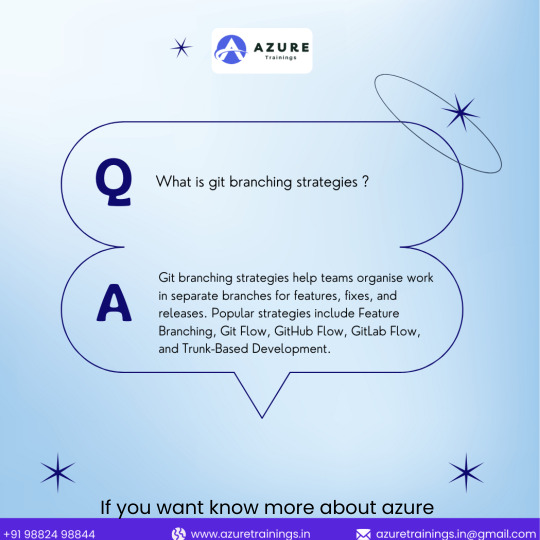
Git Branching Strategies for Efficient Development
.
.
Which branching strategy do you use? Comment below!
.
.
Popular Git Branching Strategies:
Feature Branching
Git Flow
GitHub Flow
GitLab Flow
Trunk-Based Development
#Git#GitBranching#VersionControl#GitFlow#DevOps#SoftwareDevelopment#Coding#TechTips#Developers#Programming#AzureDevOps#GitHub#Collaboration#CloudComputing#LearnWithAzureTrainings
0 notes
Text
Guy Piekarz, CEO of Panjaya – Interview Series
New Post has been published on https://thedigitalinsider.com/guy-piekarz-ceo-of-panjaya-interview-series/
Guy Piekarz, CEO of Panjaya – Interview Series


Guy Piekarz is the CEO of Panjaya, bringing extensive experience in building and scaling innovative technology services. A seasoned entrepreneur and operator, he has a proven track record of driving zero-to-one initiatives and developing scalable solutions at both startups and Apple. With a deep understanding of AI and video technology, Piekarz leads Panjaya in its mission to revolutionize multilingual video content through seamless AI-powered dubbing.
Panjaya is an AI-driven company specializing in video translation and dubbing at scale. Since its founding in 2022, the company has expanded with an executive team bringing expertise from Apple, Meta, and Vimeo.
Panjaya’s technology enables seamless dubbing, translation, and lip-syncing of videos into multiple languages while preserving the natural look and feel of the original content. With a focus on breaking language barriers in visual storytelling, the company aims to help creators and educators connect with global audiences effortlessly.
What lessons did you take from your experience building and selling Matcha to Apple that you’re applying to Panjaya?
Building and selling Matcha to Apple gave me a deep understanding of the importance of user-focused product development, strategic partnerships, and agility in a dynamic market. During my time at Apple, I saw firsthand the challenges of scaling content for global audiences, especially in localization and video translation. The inefficiencies of traditional dubbing inspired me to find a more innovative solution, which led me to Panjaya. Today, we’re applying those lessons by developing intuitive, AI-driven localization tools, collaborating with leaders like TED and JFrog, and staying adaptable to meet the evolving needs of a global audience – principles that drive everything we do as we work to redefine video localization.
What are the most significant inefficiencies in traditional dubbing and subtitling, and how is Panjaya addressing them?
Outdated solutions like closed captioning or traditional dubbing are often distracting and disrupt the viewer’s experience by failing to synchronize the nuances of communication, such as body language, facial expressions, and gestures along with the translated audio. Recognizing a need for a more advanced approach that goes beyond mere audio translation, Panjaya sought out to offer localized video content that resonates naturally and authentically with audiences around the world.
Unlike other platforms that focus solely on audio or lip synchronization only, Panjaya synchronizes audio with the full spectrum of body language – pauses, emphasis, gestures, and other body movements. This ensures a more natural, emotionally resonant connection with audiences, making Panjaya’s solutions unique in our ability to retain the integrity of the original content.
With AI dubbing, lip-syncing, and voice cloning, how do you ensure authenticity and cultural resonance across diverse audiences?
Panjaya is focused on deep-real technology, meaning we aim to represent speakers accurately and authentically. We work exclusively with trusted partners and businesses, ensuring that our technology is used ethically to enhance communication rather than mislead or misrepresent.
Panjaya is working with industry leaders like TED and JFrog. Can you share a success story that highlights the platform’s impact?
TED, a global platform for sharing ideas, has seen extraordinary results using Panjaya to adapt their talks for international audiences, including:
115% increase in views of dubbed talks
2x increase in video completion rates
69% increase in non-English browser views
30% increase in social sharing
Over 10M views and 400K interactions on highlight reels
JFrog, a DevOps and software distribution leader, hosts SwampUP, an annual conference showcasing industry advancements and thought leadership. Recognizing the importance of engaging their global audience, JFrog had already localized written content—but with video becoming the dominant medium, expanding accessibility was the next logical step. By leveraging Panjaya, JFrog seamlessly provided multilingual conference talks, ensuring their French and German-speaking users could fully engage with key product announcements and insights, driving deeper connection and broader reach.
What challenges do you foresee as AI dubbing technology becomes more widely adopted, and how is Panjaya preparing to address them?
One challenge is ensuring the output accounts for cultural context and nuance. That’s why we enable a human-in-the-loop approach—keeping it fast and seamless, with AI handling the heavy lifting while humans provide quick, intuitive refinements to ensure the final product feels natural and true to the speaker’s intent, while accounting for cultural differences.
Scalability is also something we think about constantly. As more industries adopt AI-driven solutions, we’ve invested heavily in R&D to make sure Panjaya can handle the complexities of real-world scenarios, from multi-speaker events to varying camera angles. For us, it’s all about staying ahead of these challenges while ensuring the technology is impactful, ethical, and accessible for everyone.
How do you see AI reshaping the future of video content creation and global accessibility?
Traditional barriers to global communication—language, time, and resources—are rapidly disappearing. AI-powered localization ensures higher accuracy and quality at scale, making it faster and more cost-effective for organizations to engage global audiences. With Panjaya’s platform, localization goes beyond words—capturing facial expressions, gestures, and emotional delivery to preserve the speaker’s true intent. This synchronization makes content feel native in any language, allowing organizations to connect with international audiences as if speaking directly to them.
Beyond accessibility, AI also enables deeper personalization—adapting tone, pacing, and delivery style to resonate with different cultural expectations. Instead of a one-size-fits-all approach, creators can tailor video content to feel more authentic and culturally relevant, driving the next generation of global storytelling.
While real-time AI localization isn’t here yet, it’s on the horizon—bringing us even closer to a world where language is no longer a barrier to connection.
What role does human oversight play in Panjaya’s AI dubbing process to maintain quality and nuance?
Our platform is built with collaboration in mind. Our dubbing studio offers intuitive tools that allow human reviewers to fine-tune speech rhythm, tone, and pacing, ensuring every detail aligns with the original speaker’s intent. Our human-in-the-loop approach ensures that the final output doesn’t just translate words but captures the heart of the message, making the content feel as impactful in the target language as it does in the original.
How does Panjaya ensure ethical use of its technology, particularly in preventing misuse like misinformation or impersonation?
It’s an issue we discuss and think a lot about.We are deeply committed to the ethical use of our technology. Our mission is to empower storytellers to seamlessly adapt video content for global audiences, but never at the expense of integrity or trust.
To prevent misuse, we take a number of steps. First, we only work with organizations that provide contractual guarantees regarding the content they translate. Second, we take a firm stance against misuse—our platform must never be used to impersonate individuals, spread misinformation, or cause harm. To uphold this, we are actively developing both policy and technological safeguards, including content detection and blocking measures, as well as tools to identify content generated through our platform. We are continuously refining our approach to ensure AI-driven localization remains a force for responsible, authentic communication.
What does success look like for Panjaya in the next five years, and how do you plan to achieve it?
Success for Panjaya means becoming the go-to video localization solution for any company with a global audience—or one looking to expand globally. Our focus is twofold: authenticity and scalability. On the authenticity front, we’re advancing AI to capture emotional tone, pacing, and cultural nuance so that every localized video feels as natural and impactful as the original.
For scalability, we’re tackling increasingly complex use cases—handling more speakers, diverse backgrounds, and dynamic video formats. At the same time, we’re prioritizing seamless integration into existing video creation workflows, ensuring effortless adoption through partnerships with leading video management and localization platforms. By pushing the boundaries of AI-driven localization, we aim to redefine how businesses communicate across languages—making global storytelling truly frictionless. Our work with TED is a great example of how these workflow integrations are being used.
The global video market is rapidly evolving. What trends do you see shaping its future, and how is Panjaya positioned to capitalize on them?
The global video market is being shaped by two major trends: the rapid growth of video as a primary communication tool across all levels—from individual creators to large enterprises—and the increasing need for businesses to expand globally to drive growth. As video consumption surges, companies must ensure their content resonates across languages and cultures. AI-powered localization is becoming essential—not just for translation, but for preserving authenticity, tone, and emotional impact at scale.
Panjaya is strategically positioned to capitalize on these trends by seamlessly integrating into existing video creation workflows, making global expansion effortless for businesses. Our technology is built for scale, allowing companies to localize content efficiently without compromising quality. Most importantly, we ensure that brands maintain authenticity—preserving their voice, tone, and message across languages and cultures to create video experiences that resonate worldwide.
As the market continues to demand more advanced localization and personalization capabilities, we’re not just following these trends—we’re driving them, enabling organizations to connect meaningfully with audiences worldwide.
Thank you for the great interview, readers who wish to learn more should visit Panjaya.
#2022#Accessibility#accounting#Accounts#adoption#ai#AI-powered#amp#Announcements#apple#approach#audio#barrier#brands#browser#Building#Capture#CEO#challenge#Collaboration#communication#Companies#conference#content#content creation#creators#detection#development#Devops#driving
0 notes
Text
SourceForge Alternatives: A Guide to the Top Open Source Hosting Platforms
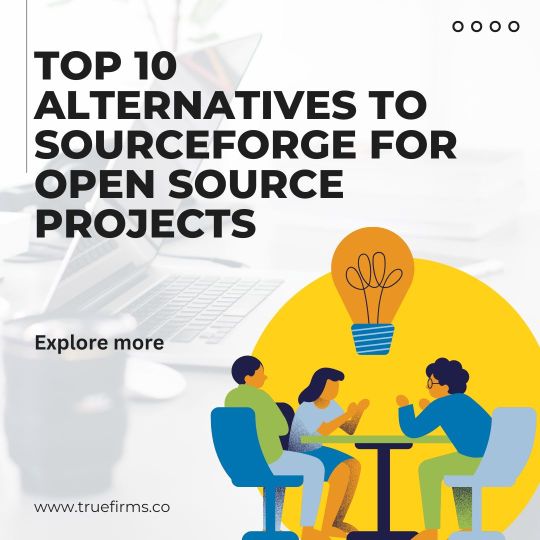
Tired of SourceForge\u2019s outdated interface? Check out TrueFirms and other top platforms that empower open-source developers. TrueFirms combines community-driven insights with modern project hosting, making it easier to discover and showcase projects. This blog dives into the unique features of each alternative, ensuring you find the perfect match for your development needs
Read more:
Top 10 Alternatives to SourceForge for Open Source Projects
#Version Control Systems#Collaboration Tools#Open Source Hosting#Software Development#DevOps Tools#GitHub
0 notes
Text
What should an elite software engineer know
In today’s tech landscape, success as a software engineer goes beyond coding. Here are key areas to focus on:
Programming Skills: Master languages like Python, Java, C++, or JavaScript, and understand algorithms and data structures.
System Design: Learn to design scalable and reliable systems, familiarizing yourself with microservices, APIs, and cloud architecture.
Development Methods: Understand methodologies like Agile and Scrum to work efficiently and adapt to changes during development.
Version Control: Use Git to track code changes and collaborate smoothly with team members.
Testing and Quality: Know how to test your software with methods like unit testing and test-driven development (TDD) to ensure quality.
Problem-Solving Skills: Develop strong analytical skills to tackle complex challenges and optimize your code.
DevOps Practices: Learn about continuous integration and deployment (CI/CD) and automation tools to streamline development processes.
Database Management: Understand both SQL and NoSQL databases for effective data management and optimization.
Security Best Practices: Be aware of common vulnerabilities and write secure code to protect applications.
Collaboration and Communication: Cultivate teamwork and communication skills for a positive work environment.
Staying Updated: Keep abreast of new trends and technologies like AI and machine learning.
Soft Skills: Develop empathy, adaptability, and a growth mindset to enhance collaboration and leadership.
By mastering these areas, you can unlock lucrative earnings in your career as a software engineer. Unlocking Lucrative Earnings: Mastering Software Engineering Salaries is about investing in your skills for success.
#SoftwareEngineering#TechSkills#Programming#SystemDesign#AgileDevelopment#GitVersionControl#QualityAssurance#ProblemSolving#DevOps#CI_CD#DatabaseManagement#SQL#NoSQL#CyberSecurity#Collaboration#TechTrends#MachineLearning#AI#SoftSkills#ContinuousLearning#CareerGrowth#TechLeadership#SoftwareEngineerSuccess#TechCareers#UnlockEarnings#SoftwareDevelopment#GrowthMindset
1 note
·
View note
Text
Struggling to choose between faster delivery or seamless collaboration for your development process?
Speed or collaboration? With DevOps and Agile, you don't have to pick just one! 🚀
We have a solution to breaks down the key differences between these two powerhouses and shows how integrating both can skyrocket your development process.
Maximize efficiency, streamline teamwork, and deliver better software, faster.
👉 Read more: DevOps Methodology vs Agile
#DevOps#AgileMethodology#SoftwareDevelopment#DevOpsVsAgile#TechEfficiency#DevelopmentProcess#AgileTransformation#DevOpsSolutions#Collaboration#TechInnovation#SoftwareEngineering#HiddenBrains
0 notes
Text
Unlock New Horizons with Jaiinfoway: Your Partner in Digital Transformation
In the rapidly evolving digital world, businesses need more than just basic technology solutions to stay ahead. is here to offer you a pathway to success through our comprehensive range of digital transformation services. Our expertise spans AI, machine learning, cloud solutions, and DevOps, all designed to drive innovation and growth for your business.
Revolutionize Your Business with Jaiinfoway’s AI Solutions
Artificial Intelligence is no longer a futuristic concept—it's a present-day necessity for businesses aiming to lead the Jaiinfoway market. harnesses the power of AI to help you automate processes, gain actionable insights, and make data-driven decisions. Our team of AI experts works diligently to craft tailored solutions that meet your specific business needs, from predictive analytics to intelligent automation. With Jaiinfoway, you can stay ahead of the competition and achieve remarkable results through advanced AI technologies.
Experience the Future of Cloud Computing with Jaiinfoway
Cloud computing has transformed the way businesses operate, offering flexibility, scalability, and efficiency. Jaiinfoway, as a recognized Google Cloud Partner, provides you with cutting-edge cloud solutions that streamline your operations and enhance your capabilities. We collaborate closely with Google Cloud’s product and industry teams to bring you the latest in cloud technology, whether you’re looking for seamless cloud migration, effective data management, or innovative cloud-based applications. Let Jaiinfoway be your guide to a future-ready cloud strategy.
Transform Your Development Processes with Jaiinfoway’s DevOps Expertise
Effective DevOps practices are crucial for accelerating development cycles and ensuring high-quality software delivery. Jaiinfoway specializes in DevOps services that cover every aspect of your development needs. From efficient CI/CD integration to automated testing and deployment, our team is dedicated to optimizing your software development processes. We also offer real-time monitoring and a security-first approach to safeguard your data and applications. Partner with Jaiinfoway to streamline your development efforts and achieve operational excellence.
Why Choose Jaiinfoway for Your Digital Transformation Journey?
Choosing the right partner for digital transformation can make all the difference. Jaiinfoway stands out with our deep expertise in AI, machine learning, cloud solutions, and DevOps services. Our team of over 75 skilled professionals is committed to delivering exceptional outcomes for your business. At Jaiinfoway, we combine industry-leading technology with a customer-centric approach to provide solutions that are not only effective but also innovative and future-focused.
Visit us www.jaiinfoway.com to read more about us.
Contact Us-
Visit us- https://jaiinfoway.com/
Facebook- https://www.facebook.com/JaiInfoway/
Instagram- https://www.instagram.com/jaiinfowayofficial/
LinkedIn- https://www.linkedin.com/company/jaiinfoway/?originalSubdomain=in
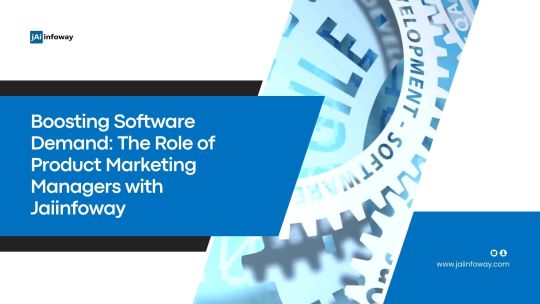
0 notes
Text
Collaborative Programming
Here’s a sample of using Microsoft’s DevOps, we can use this to remotely collaborate, take a look: https://collaboration.visualstudio.com/Beta-7%20Sigma Wrote me if you’re interested, it’s loose and good fun, any level so hit me up to get started! [email protected] Glenn T. Kitchen
0 notes
Text
6 Proven Tips for Effective DevOps Collaboration and Communication
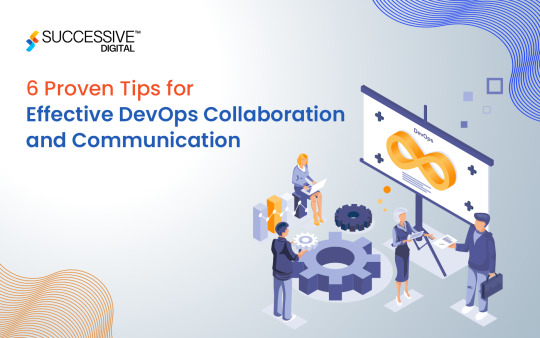
Unlock seamless collaboration and communication in DevOps with these 6 proven tips. Learn to foster synergy across teams, streamline workflows, and enhance productivity. Embrace transparency, automate repetitive tasks, and prioritize feedback loops. Cultivate a culture of trust and accountability while leveraging cutting-edge tools and methodologies. Elevate your DevOps game today!
Also read collaboration and communication in DevOps
0 notes
Text

Top DevOps Service Providers
DevOps service providers play a crucial role in modern software development by bridging the gap between development and operations teams, streamlining processes, and fostering a culture of collaboration and innovation. These providers offer a range of services aimed at optimizing software delivery pipelines, enhancing deployment automation, and improving overall system reliability and performance.
Key aspects of DevOps services provided by these providers include:
DevOps Consulting: Offering strategic guidance and expertise in implementing DevOps practices tailored to the specific needs and goals of organizations.
Continuous Integration/Continuous Deployment (CI/CD): Designing and implementing CI/CD pipelines to automate the build, test, and deployment processes, ensuring rapid and reliable delivery of software.
Cloud Infrastructure Management: Leveraging cloud technologies to design, deploy, and manage scalable and cost-effective infrastructure solutions, optimizing resource utilization and performance.
Automation: Implementing automation tools and frameworks to streamline repetitive tasks, improve efficiency, and reduce manual errors across the development and operations lifecycle.
Monitoring and Logging: Setting up robust monitoring and logging systems to track performance metrics, detect issues proactively, and ensure the stability and availability of systems.
Security Integration: Integrating security practices into the DevOps workflow, implementing security controls, and conducting regular audits to ensure compliance and protect against threats.
Collaboration and Culture Building: Promoting a collaborative culture within organizations by fostering communication, knowledge sharing, and cross-functional teamwork between development, operations, and other stakeholders.
DevOps service providers play a pivotal role in helping businesses accelerate their software delivery, improve agility, and achieve greater efficiency and quality in their IT operations. By leveraging best practices, tools, and expertise, these providers enable organizations to stay competitive in today's fast-paced and dynamic digital landscape.
#devops#tech#innovation#automation#cloud#digitaltransformation#agile#softwaredevelopment#collaboration#ITservices#techtweek
0 notes
Text
What is the role of a DevOps approach in cloud migration?
A DevOps approach plays a crucial role in cloud migration by facilitating a seamless transition and optimizing the operational efficiency of cloud environments. Here's how:
Automation: Streamlines tasks like provisioning and deployment.
CI/CD: Enables rapid and frequent updates to applications.
Infrastructure as Code (IaC): Ensures consistency and scalability.
Collaboration: Breaks down silos, fosters teamwork.
Monitoring and Feedback: Provides insights for continuous improvement.
Security and Compliance: Integrates security measures into the pipeline.
DevOps optimizes the migration process, ensuring efficiency, agility, and security in cloud environments.
#DevOps#CloudMigration#Automation#CI/CD#IaC#InfrastructureAsCode#Collaboration#Monitoring#Security#Compliance#Agility#Efficiency#magistersign#onlinetraining#support#cannada
0 notes
Text
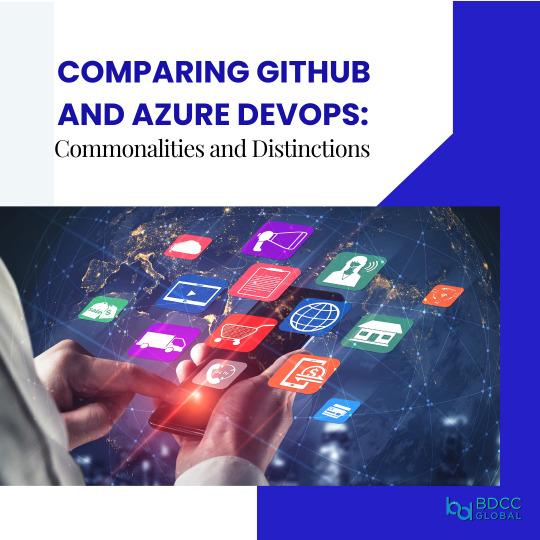


GitHub vs Azure DevOps: Exploring the Avenues of Collaboration and Innovation.
Uncover the Common Grounds and Unique Traits of These Platforms!
0 notes
Text
The role of MLSecOps in the future of AI and ML
New Post has been published on https://thedigitalinsider.com/the-role-of-mlsecops-in-the-future-of-ai-and-ml/
The role of MLSecOps in the future of AI and ML

Having just spent some time in reviewing and learning further about MLSecOps (Fantastic Course on LinkedIn by Diana Kelley) I wanted to share my thoughts on the rapidly evolving landscape of technology, the integration of Machine Learning (ML) and Artificial Intelligence (AI) has revolutionized numerous industries.
However, this transformative power also comes with significant security challenges that organizations must address. Enter MLSecOps, a holistic approach that combines the principles of Machine Learning, Security, and DevOps to ensure the seamless and secure deployment of AI-powered systems.
The state of MLSecOps today
As organizations continue to harness the power of ML and AI, many are still playing catch-up when it comes to implementing robust security measures. In a recent survey, it was found that only 34% of organizations have a well-defined MLSecOps strategy in place. This gap highlights the pressing need for a more proactive and comprehensive approach to securing AI-driven systems.
Key challenges in existing MLSecOps implementations
1. Lack of visibility and transparency: Many organizations struggle to gain visibility into the inner workings of their ML models, making it difficult to identify and address potential security vulnerabilities.
2. Insufficient monitoring and alerting: Traditional security monitoring and alerting systems are often ill-equipped to detect and respond to the unique risks posed by AI-powered applications.
3. Inadequate testing and validation: Rigorous testing and validation of ML models are crucial to ensuring their security, yet many organizations fall short in this area.
4. Siloed approaches: The integration of ML, security, and DevOps teams is often a significant challenge, leading to suboptimal collaboration and ineffective implementation of MLSecOps.
5. Compromised ML models: If an organization’s ML models are compromised, the consequences can be severe, including data breaches, biased decision-making, and even physical harm.
6. Securing the supply chain: Ensuring the security and integrity of the supply chain that supports the development and deployment of ML models is a critical, yet often overlooked, aspect of MLSecOps.

The imperative for embracing MLSecOps
The importance of MLSecOps cannot be overstated. As AI and ML continue to drive innovation and transformation, the need to secure these technologies has become paramount. Adopting a comprehensive MLSecOps approach offers several key benefits:
1. Enhanced security posture: MLSecOps enables organizations to proactively identify and mitigate security risks inherent in ML-based systems, reducing the likelihood of successful attacks and data breaches.
2. Improved model resilience: By incorporating security testing and validation into the ML model development lifecycle, organizations can ensure the robustness and reliability of their AI-powered applications.
3. Streamlined deployment and maintenance: The integration of DevOps principles in MLSecOps facilitates the continuous monitoring, testing, and deployment of ML models, ensuring they remain secure and up-to-date.
4. Increased regulatory compliance: With growing data privacy and security regulations, a robust MLSecOps strategy can help organizations maintain compliance and avoid costly penalties.
Potential reputational and legal implications
The failure to implement effective MLSecOps can have severe reputational and legal consequences for organizations:
1. Reputational damage: A high-profile security breach or incident involving compromised ML models can severely damage an organization’s reputation, leading to loss of customer trust and market share.
2. Legal and regulatory penalties: Noncompliance with data privacy and security regulations can result in substantial fines and legal liabilities, further compounding the financial impact of security incidents.
3. Liability concerns: If an organization’s AI-powered systems cause harm due to security vulnerabilities, the organization may face legal liabilities and costly lawsuits from affected parties.
Key steps to implementing effective MLSecOps
1. Establish cross-functional collaboration: Foster a culture of collaboration between ML, security, and DevOps teams to ensure a holistic approach to securing AI-powered systems.
2. Implement comprehensive monitoring and alerting: Deploy advanced monitoring and alerting systems that can detect and respond to security threats specific to ML models and AI-driven applications.
3. Integrate security testing into the ML lifecycle: Incorporate security testing, including adversarial attacks and model integrity checks, into the development and deployment of ML models.
4. Leverage automated deployment and remediation: Automate the deployment, testing, and remediation of ML models to ensure they remain secure and up-to-date.
5. Embrace explainable AI: Prioritize the development of interpretable and explainable ML models to enhance visibility and transparency, making it easier to identify and address security vulnerabilities.
6. Stay ahead of emerging threats: Continuously monitor the evolving landscape of AI-related security threats and adapt your MLSecOps strategy accordingly.
7. Implement robust incident response and recovery: Develop and regularly test incident response and recovery plans to ensure organizations can quickly and effectively respond to compromised ML models.
8. Educate and train employees: Provide comprehensive training to all relevant stakeholders, including developers, security personnel, and end-users, to ensure a unified understanding of MLSecOps principles and best practices.
9. Secure the supply chain: Implement robust security measures to ensure the integrity of the supply chain that supports the development and deployment of ML models, including third-party dependencies and data sources.
10. Form violet teams: Establish dedicated “violet teams” (a combination of red and blue teams) to proactively search for and address vulnerabilities in ML-based systems, further strengthening the organization’s security posture.

The future of MLSecOps: Towards a proactive and intelligent approach
As the field of MLSecOps continues to evolve, we can expect to see the emergence of more sophisticated and intelligent security solutions. These may include:
1. Autonomous security systems: AI-powered security systems that can autonomously detect, respond, and remediate security threats in ML-based applications.
2. Federated learning and secure multi-party computation: Techniques that enable secure model training and deployment across distributed environments, enhancing the privacy and security of ML systems.
3. Adversarial machine learning: The development of advanced techniques to harden ML models against adversarial attacks, ensuring their resilience in the face of malicious attempts to compromise their integrity.
4. Continuous security validation: The integration of security validation as a continuous process, with real-time monitoring and feedback loops to ensure the ongoing security of ML models.
By embracing the power of MLSecOps, organizations can navigate the complex and rapidly evolving landscape of AI-powered technologies with confidence, ensuring the security and resilience of their most critical systems, while mitigating the potential reputational and legal risks associated with security breaches.
Have access to hundreds of hours of talks by AI experts OnDemand.
Sign up for our Pro+ membership today.
AI Accelerator Institute Pro+ membership
Unlock the world of AI with the AI Accelerator Institute Pro Membership. Tailored for beginners, this plan offers essential learning resources, expert mentorship, and a vibrant community to help you grow your AI skills and network. Begin your path to AI mastery and innovation now.
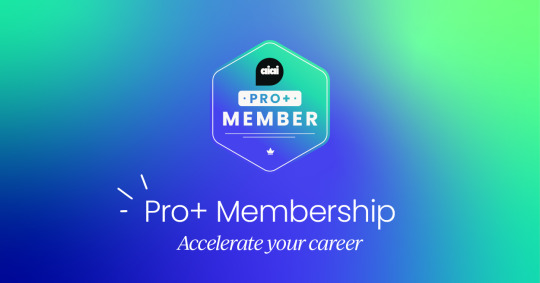
#Adversarial attacks#ai#ai skills#AI-powered#applications#approach#artificial#Artificial Intelligence#autonomous#Blue#breach#challenge#Collaboration#Community#compliance#comprehensive#compromise#computation#continuous#course#data#Data Breaches#data privacy#data privacy and security#deployment#developers#development#Devops#employees#Explainable AI
0 notes